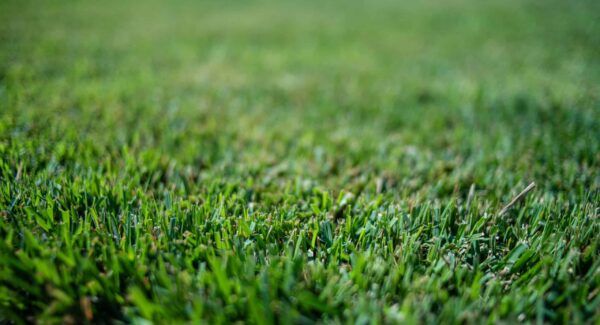Can You Mow Wet Grass After it Rains?
Rain benefits lawns, promoting healthy growth and lushness, especially in the spring when grass grows intensively. After the rain, the question arises – can the grass be mowed? Experts will say – No! And there are several objective reasons for this.
When the grass is wet, it becomes sticky, making it difficult for the mower to cut the blades efficiently. Mowing wet grass also results in an untidy appearance of the yard, as clumped grass creates maintenance problems.
Furthermore, if you don’t dry the mower properly after mowing, be prepared for mold, which no one wants. Additionally, mowing the grass after rain can result in stains from the wet clippings, both on the clothing of the person mowing and potentially on walls and fences, and such stains are hard to remove.
In this text, we will explain why mowing grass after rain is terrible, how much damage it can cause to mowers, and how it can potentially damage the lawn. Remember that the whole process is potentially dangerous for the person mowing.
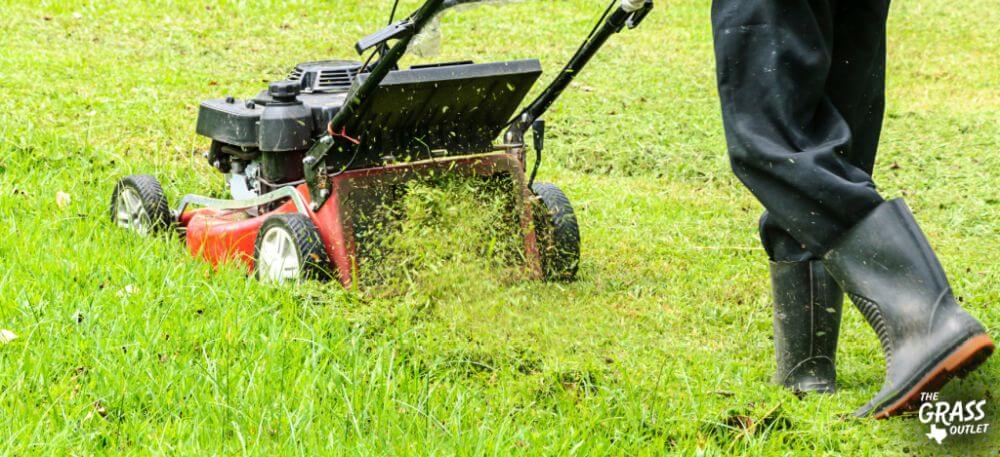
Why is mowing grass after rain so challenging?
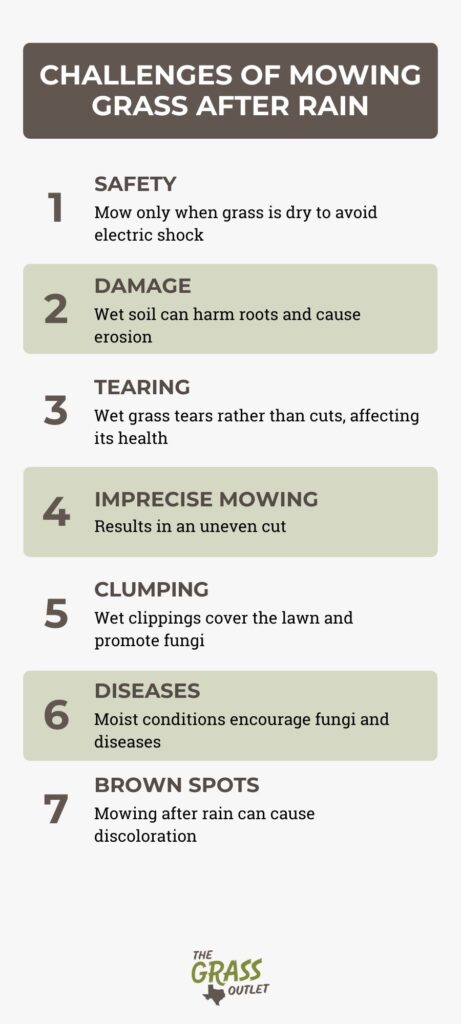
Waiting for the grass to dry is better for safety, as there is a higher chance of slipping and getting injured. Additionally, the mower itself can slip if its tires lack grip.
Let’s look at other reasons why mowing wet grass is not a good idea:
- Damage to Roots and Soil: When the ground is wet, it is easy to damage the roots and the soil itself, either from the mower’s wheels or because the blades are set to cut low. It creates holes, exposes the soil, and can lead to erosion.
- Tearing Grass Blades: In wet conditions, grass is more likely to tear than cut, which reduces its vitality and health over time.
- Imprecise Mowing: Mowing wet grass results in an uneven cut.
- Clumping of Clippings: Wet clippings can form clumps that fall onto the lawn, covering it and preventing oxygen from reaching the soil. It also promotes the spread of fungi.
- Fungal Growth and Diseases: Fungi and other diseases thrive in moist environments, and poorly cut grass in high humidity is prone to infection. Simply put, moisture helps diseases spread.
- Brown Spots: Brown spots can easily appear due to mowing after rain.
Mowing Grass After Rain is Bad for Your Lawnmower
There are several reasons why mowing the grass immediately after rain is unsuitable for the mower. These machines work on dry ground; otherwise, they can sink into the soil, compact it, and cause damage.
What does mowing wet grass do to the mower? Damp grass is heavier to cut, which puts strain on the machine’s motor and blades. Due to the grass’s stickiness, the mower can easily clog. Once clogged, the mower no longer operates at full intensity, potentially damaging its components. You should clean it regularly during mowing; otherwise, it will stop and break down.
A stabilizer should be present in gasoline mowers because, without it, the fuel left in the mower can be contaminated by high humidity, leading to corrosion.
Electric mowers are not recommended for this purpose because they carry a risk of electric shock.
Lawnmowers are not cheap machines, so why risk damaging them if you have already invested a certain amount of money? A purchased machine should serve you for the long term.
How Long Should You Wait to Mow the Grass After Rain?
After heavy rain and storms, the soil is expected to be soaked. To mow the grass, you should wait at least two days for it to dry completely. If it was a light rain or morning dew, waiting 3 to 5 hours should be sufficient.
Before mowing the grass after rain, ensure it is dry enough to avoid damage to both the grass and the mower. What is advised?
- Walk across the lawn and visually inspect the grass. It is too early to mow if it still looks wet or if water squishes under your shoes.
- Touch the blades of grass; if they are damp or you see water droplets, wait until they dry.
- Check the soil moisture by pushing a screwdriver or similar tool into the ground. If it easily sinks in and the soil feels too soft, the grass is too wet for mowing.
When is the Best Time to Mow the Grass?
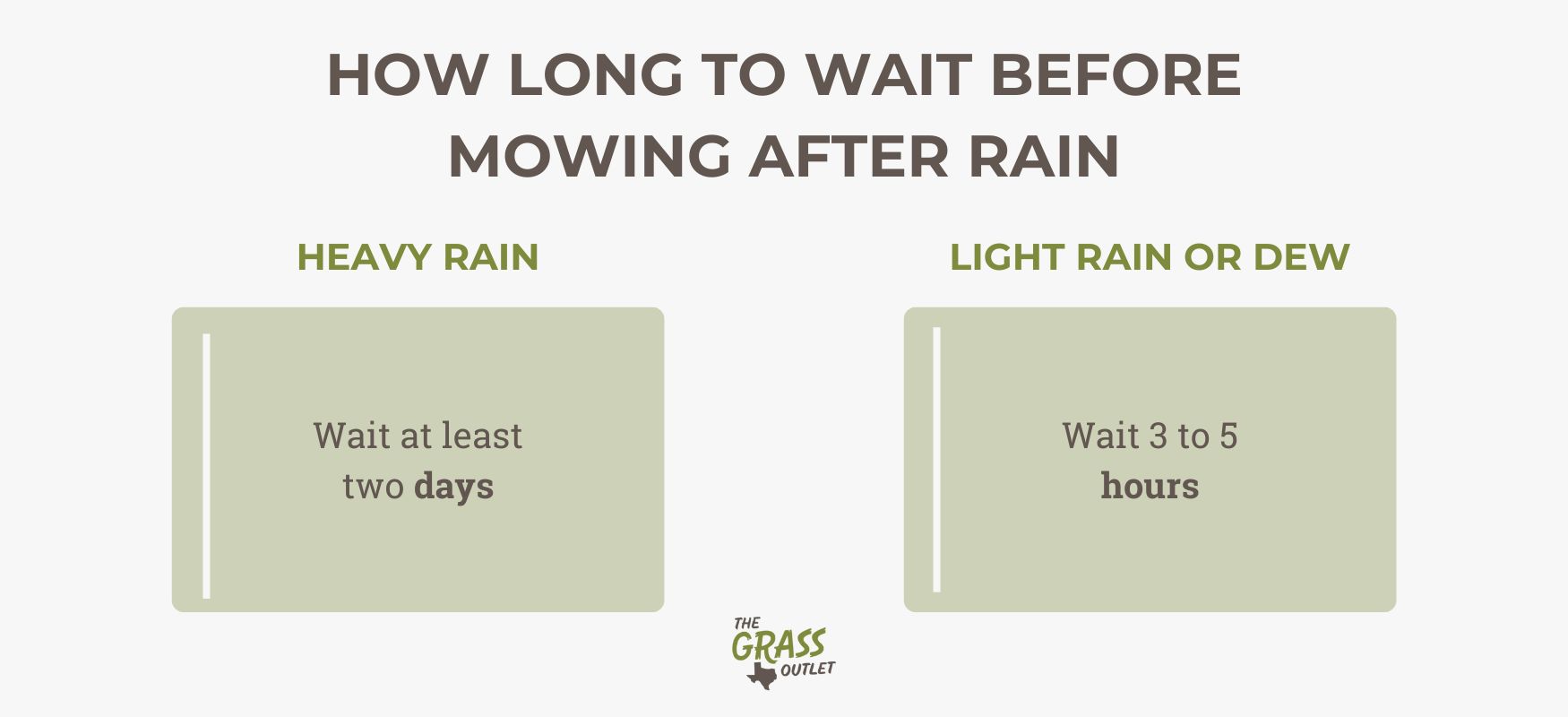
It is best to mow when the grass is well-hydrated but dry. The next suggestion is to do it early in the morning before the sun is too intense. It is also advisable to mow in the evening after the day’s heat has passed.
Mowing during the hottest part of the day can stress the grass, especially if it is rebounding from heavy moisture, so avoid that period.
How to Adjust the Lawnmower?
- Set the mower blades higher than usual to avoid cutting the grass too low. Taller grass can also help prevent clumping.
- Reduce the mowing speed so the mower can more efficiently handle the grass and reduce the risk of tearing.
- Periodically stop mowing to clean clumps of grass from the underside of the mower.
What Can Be an Alternative to Mowing Wet Grass?
While the grass is still wet and, as we’ve seen, it’s not advisable to mow in that state, you can organize other lawn maintenance activities to keep it tidy and well-groomed.
While waiting for the grass to dry, you can focus on weeding. This is an excellent opportunity to go through the lawn and remove unwanted weeds.
Additionally, now is a great time to trim the lawn edges. Using an edger or a hand trimmer will contribute to a well-maintained appearance.
Create a Regular Mowing Plan
It’s a good idea to have a regular mowing schedule to avoid situations where you need to mow the grass urgently and unexpected heavy rain further delays mowing.
By creating a mowing calendar, you can establish good organization and avoid stressful situations, keeping the lawn under control. Regular mowing will prevent the grass from growing too long, which makes it harder to mow in wet conditions.
You can adjust the mowing schedule according to weather conditions. If you know there will be rainy days, plan well and avoid mowing wet grass.
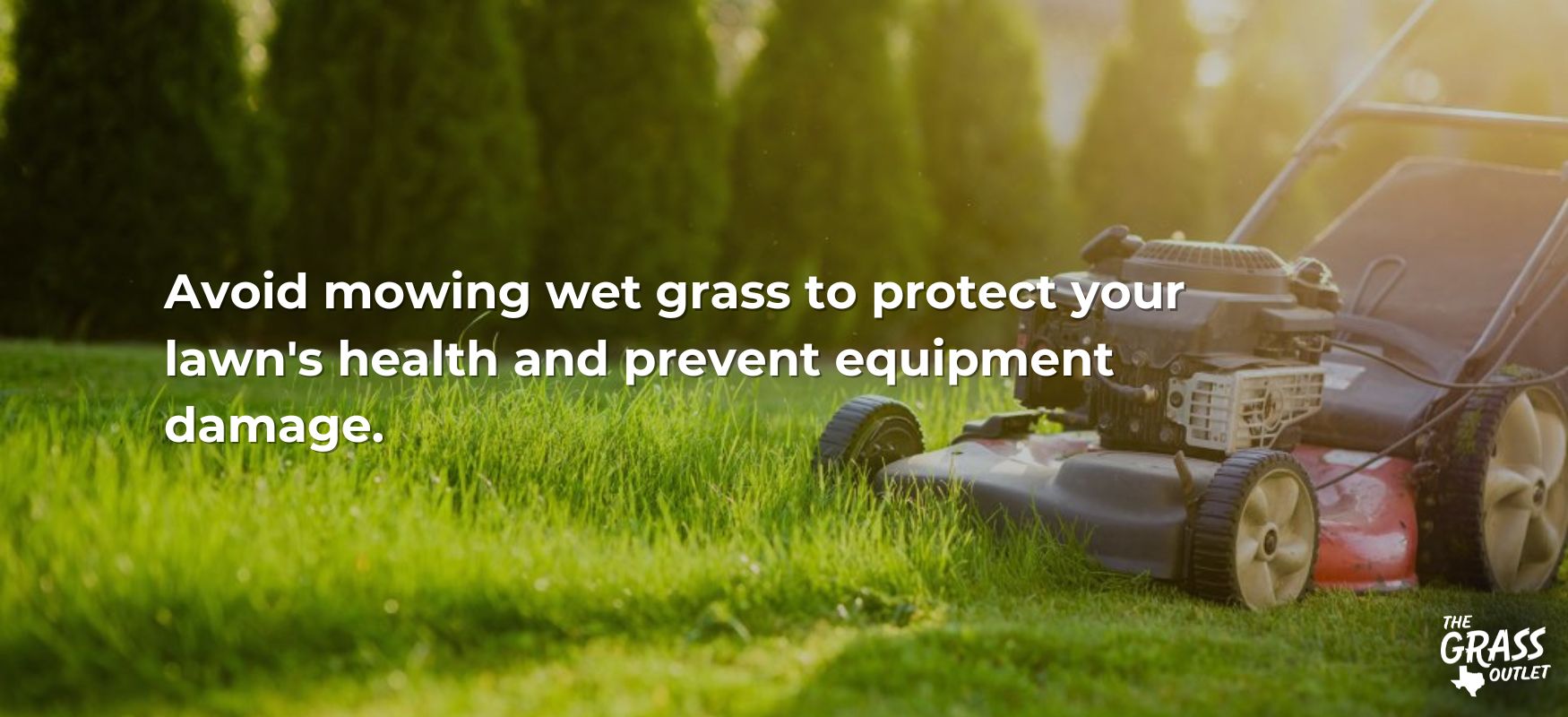
Mowing Wet Grass: What If You Have To?
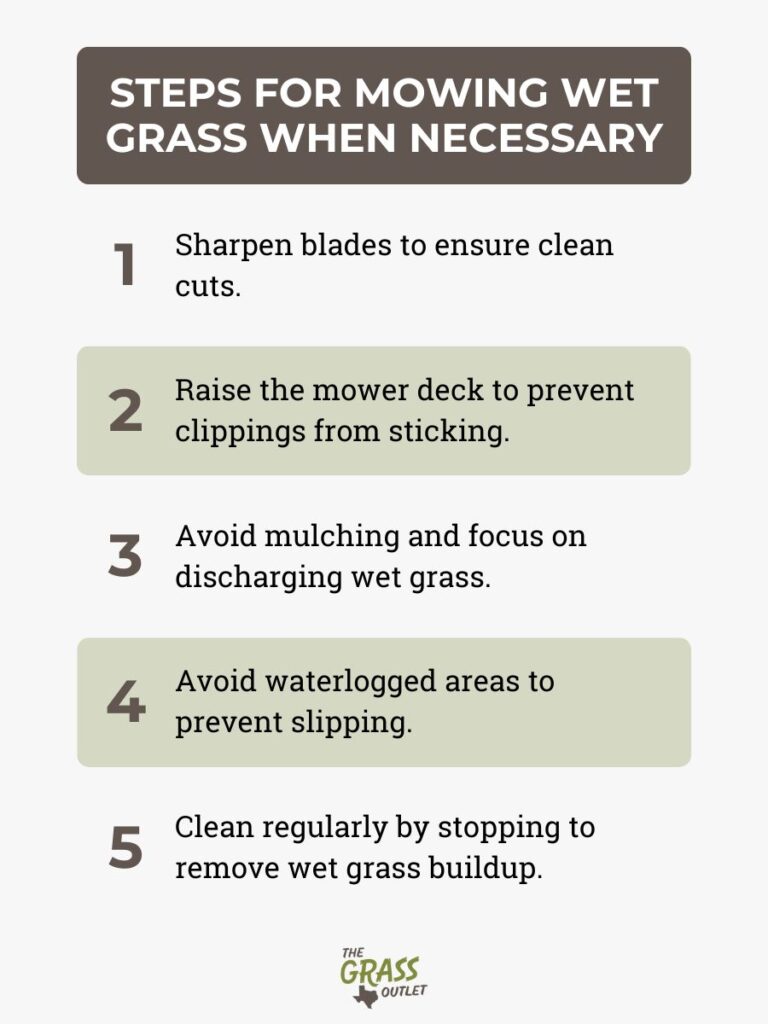
Then, raise the mower deck to reduce the likelihood of clippings getting stuck.
Avoid mulching; instead, focus on discharging the wet grass. Lawn mulching is a lousy option for damp grass because it sticks to the inside of the bag.
While mowing, avoid heavily waterlogged areas to prevent slipping. Stop the mower regularly to clean the buildup of wet grass.
Conclusion
As you can see from everything written above, mowing wet grass is not advisable for several reasons. Firstly, it affects the health of the grass itself, as it becomes softer and more prone to tearing and damage. Consequently, it is more susceptible to fungi and various diseases, which spread more quickly in a damp environment.
Wet grass can damage the mower by clogging it, reducing efficiency by requiring frequent cleaning and maintenance.
Wet grass often forms clumps on the lawn, making it difficult to achieve an even cut and resulting in an uneven appearance.
The damp environment left after mowing can encourage the growth of fungi and diseases and attract pests that can damage the lawn.
Finally, mowing wet grass is unsafe for the mower operator due to the increased risk of slipping and injury.
All in all, why be impatient? Wait for the lawn to dry before proceeding with maintenance. This way, you protect both yourself and your equipment.
The Grass Outlet – Contact Us for Any Grass Care Questions
If you still have any doubts, please get in touch with The Grass Outlet; we will gladly answer all your questions.
Have you read our other grass tips?
